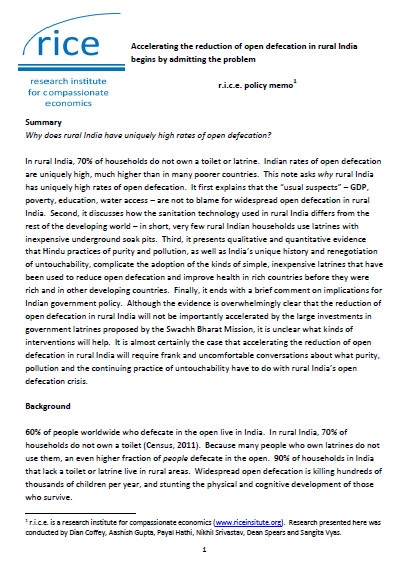Accelerating the reduction of open defecation in rural India begins by admitting the problem
 |
Why does rural India have uniquely high rates of open defecation?
nota Feb 2015 ; 13 páginas
Ed. RICE Institute - Amston
Formato descargable: PdF
Descargable desde el editor
Un editor presentación
Abstract:
This notes asks why rural India has uniquely high rates of open defecation.
It first explains that the “usual suspects”—GDP, poverty, education, water access—are not to blame for widespread open defecation in rural India.
Second, it discusses how the sanitation technology used in rural India differs from the rest of the developing world—in short, very few rural Indian households use latrines with inexpensive underground soak pits.
Third, it presents qualitative and quantitative evidence that Hindu practices of purity and pollution, as well as India’s unique history and renegotiation of untouchability, complicate the adoption of the kinds of simple, inexpensive latrines that have been used to reduce open defecation in other developing countries.
Palabras claves: |
ritos y culturas (CI) (DT) (HP) (ope) , SANTOLIC liderado por la comunidad de Saneamiento Total (CI) (DT) (HP) (ope) |
País: |
Editor/Difusor: |
|
RICE Institute - Amston - Estados Unidos |
Si hay un enlace roto, estaremos encantados de recibir un mensaje: communication@pseau.org